These gluten-free brioche burger buns are the perfect for all your juicy burgers! Made with Caputo Fioreglut gluten-free flour, this recipe makes four light and fluffy buns and only requires one rise!
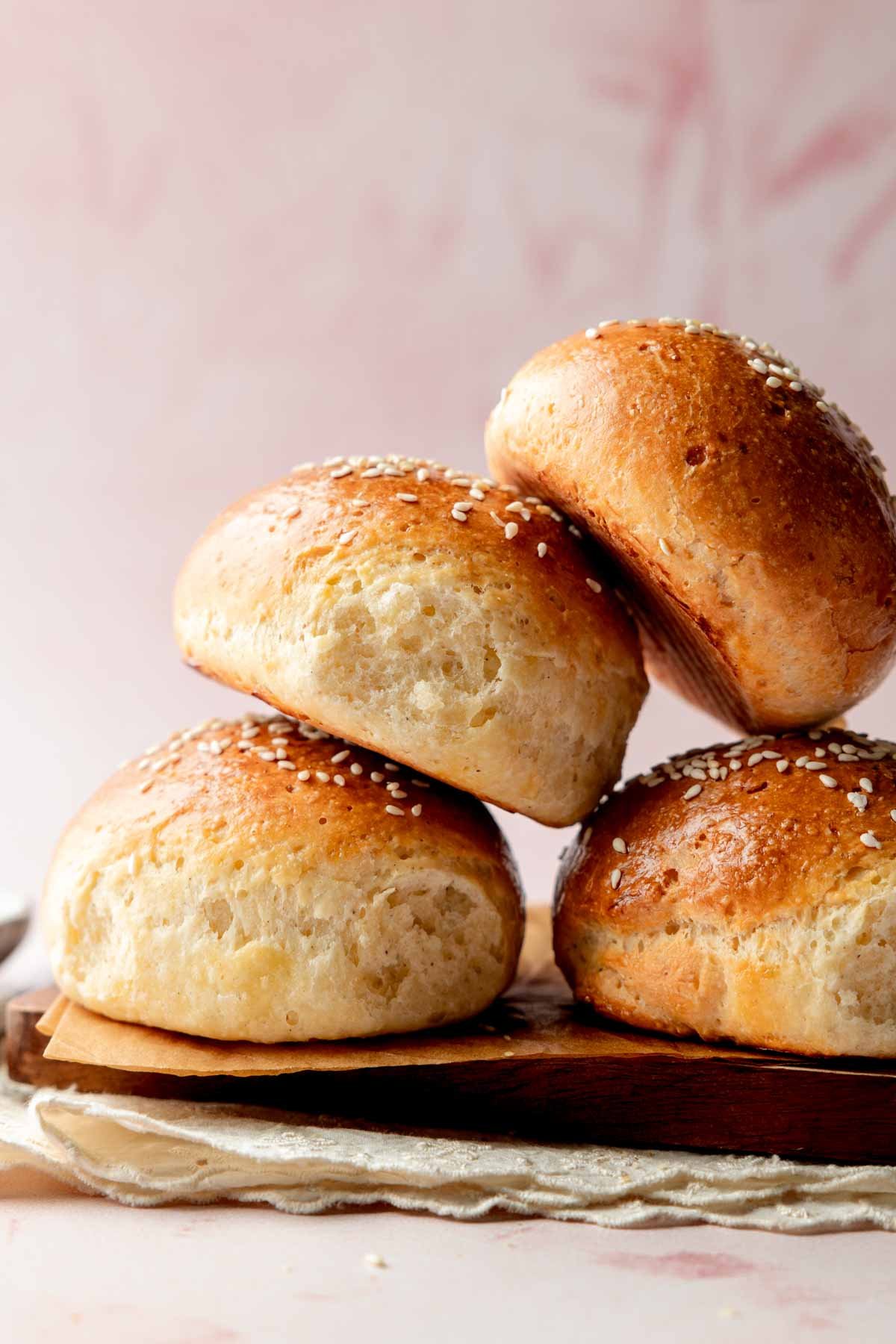
💌 Want to Save This?
Unsubsribe at any time.
Katie's Recipe Testing Notes
Since first publishing this recipe in July 2023, it’s become a reader favorite. It's one of my favorites too—I’ve made it more times than I can count! These gluten-free hamburger buns have the best flavor, a soft, fluffy texture, and just the right structure to hold up to a burger.
As with most of my gluten-free bread recipes, Caputo Fioreglut is secret to creating that soft, bakery-style crumb, while a little extra psyllium husk adds structure.
Want to learn more about why Fioreglut works so well in gluten-free baking? I’ve got a full Fioreglut review.
Not sure how to use psyllium or how to swap whole vs. powdered? Check out my post on psyllium husk in gluten-free baking—and if you’re mid-recipe, my conversion calculator can help you quickly swap between the two.
Ingredients for Gluten-Free Burger Buns
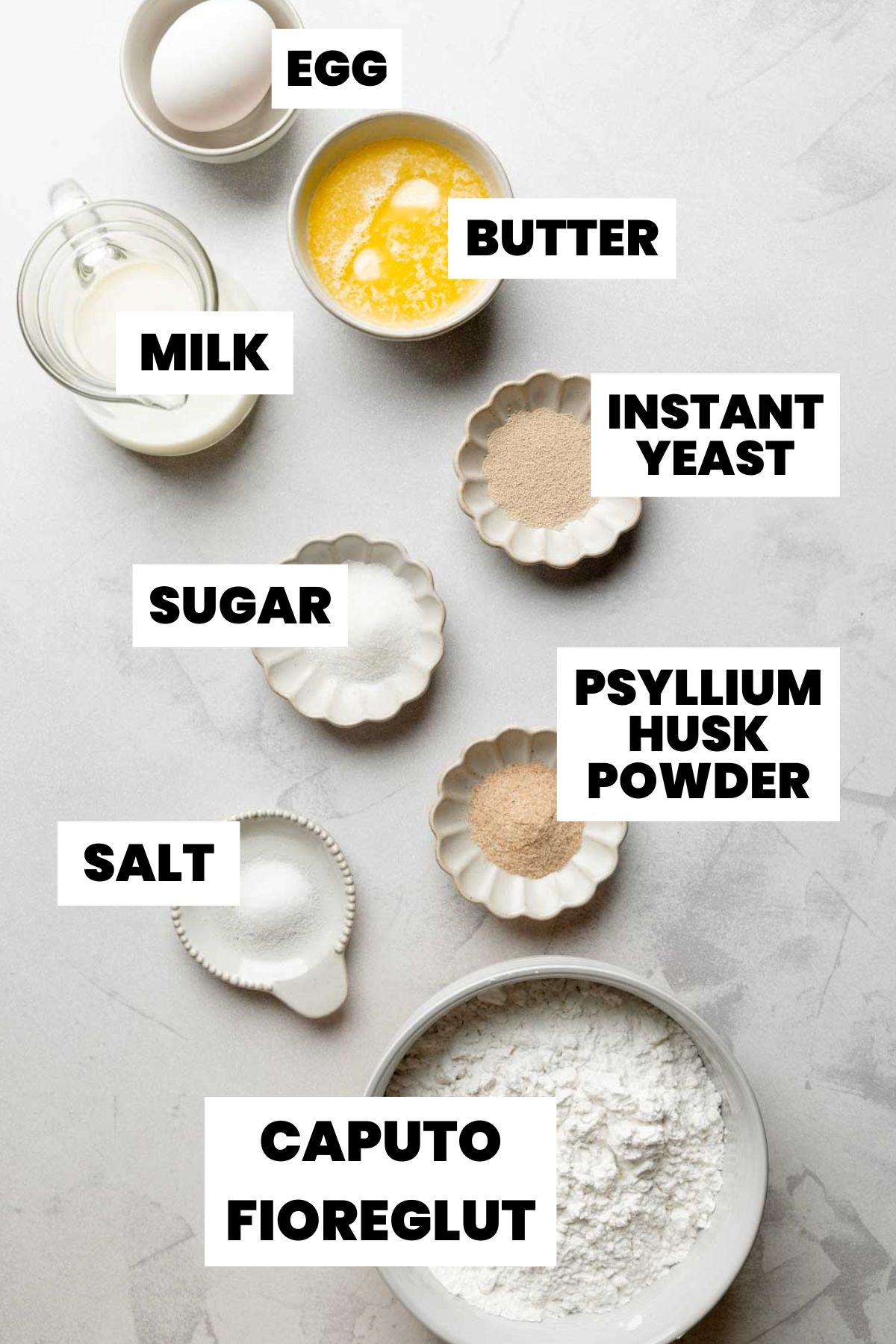
- Caputo Fioreglut Gluten-free Flour: For the best results, I do not recommend any other gluten-free flour blend for this recipe, the results with other flour blends are no where near as fluffy and tender. If you use a different flour blend, the result will be much more dense. With Fioreglut, there’s no need for extra starches or xanthan gum.
**Please Note: This flour contains gluten-free wheat starch, so it is not recommended for those with a wheat allergy. This product is considered gluten-free and safe for those with Celiac disease or on a gluten-free diet. - Psyllium Husk Powder: This helps with elasticity and structure, mimicking the binding properties of gluten. After testing with both whole husk and the powder, I preferred the powder, but you can use whole husks if that's all you have.
- Instant Yeast: Also known as RapidRise or Bread Machine yeast. These types of yeast can all be mixed directly into the flour and do not need to be dissolved first.
See recipe card for full information on ingredients and quantities.

Get the Goods!
Caputo Fioreglut
I recommend you buy Caputo Fioreglut from Brick Oven Baker. They have great prices and you can use code: KATIE for 10% off your first order!
Can I Make Them Dairy-Free?
For a dairy-free option, substitute vegan butter, like Earth Balance Vegan Buttery Sticks and dairy-free milk, such as almond milk.
Topping Variations
Feel free to vary the toppings on these buns or simply leave them plain. Sesame seeds, everything bagel seasoning, dried minced onion, poppy seeds, or flaky sea salt would be delicious on these buns!
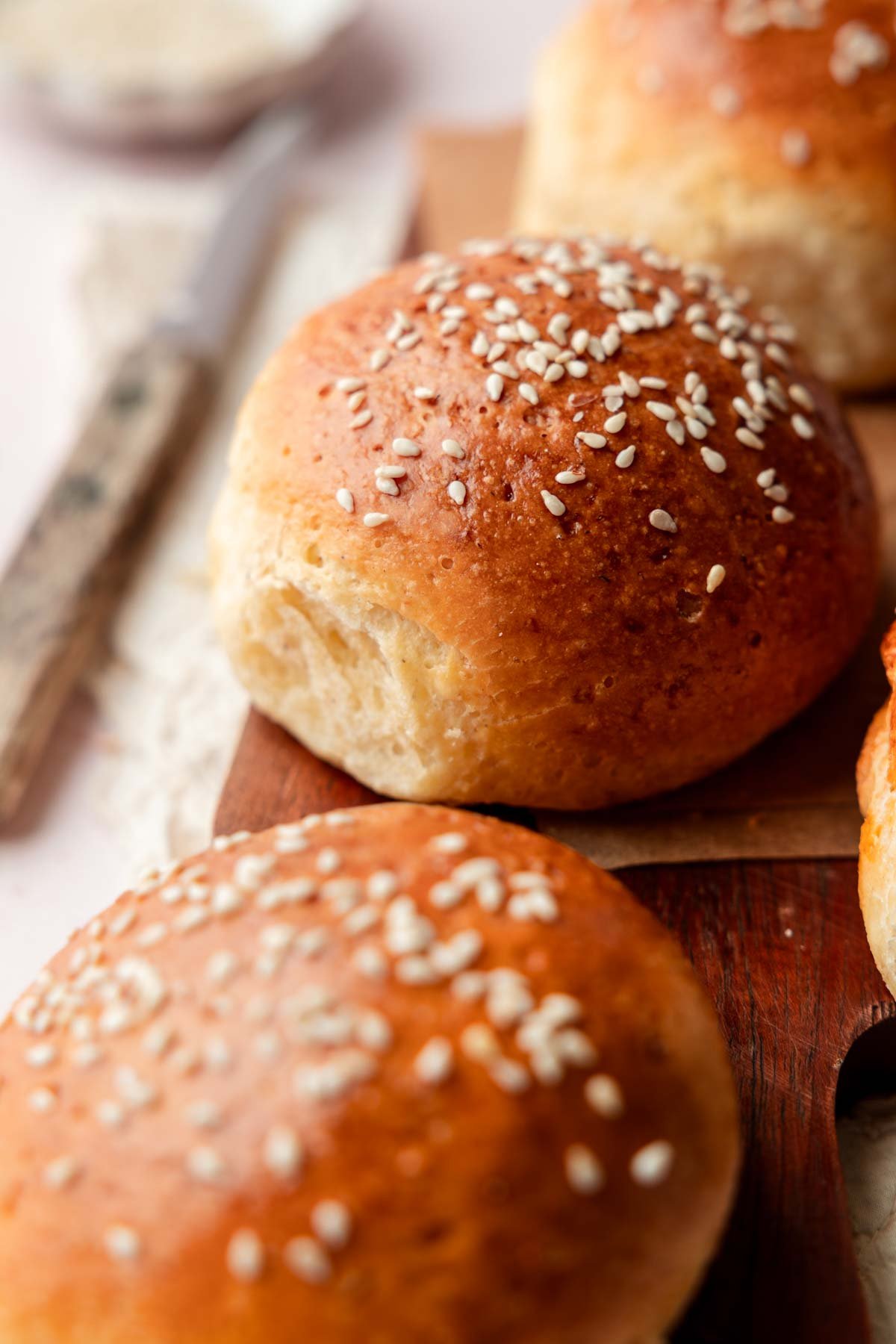
Equipment You'll Need
In order to make this recipe or any of my other yeast bread recipes, these tools are extremely helpful and well worth the investment!
- A stand mixer is very helpful to properly mix the dough. This dough is thick and batter-like so a hand mixer is not powerful enough.
- You need a digital instant read thermometer to check the temperature of your liquids. This is very important for proper yeast activation.
- A digital kitchen scale is imperative for accurately measuring the ingredients. A lot of gluten-free recipes call for weight measurements, so you'll get plenty of use out of it! Look for one that can measure down to 0.01g, this is especially important for measuring small amounts of ingredients, like the yeast and psyllium husk.
How to Make Homemade Gluten-Free Hamburger Buns
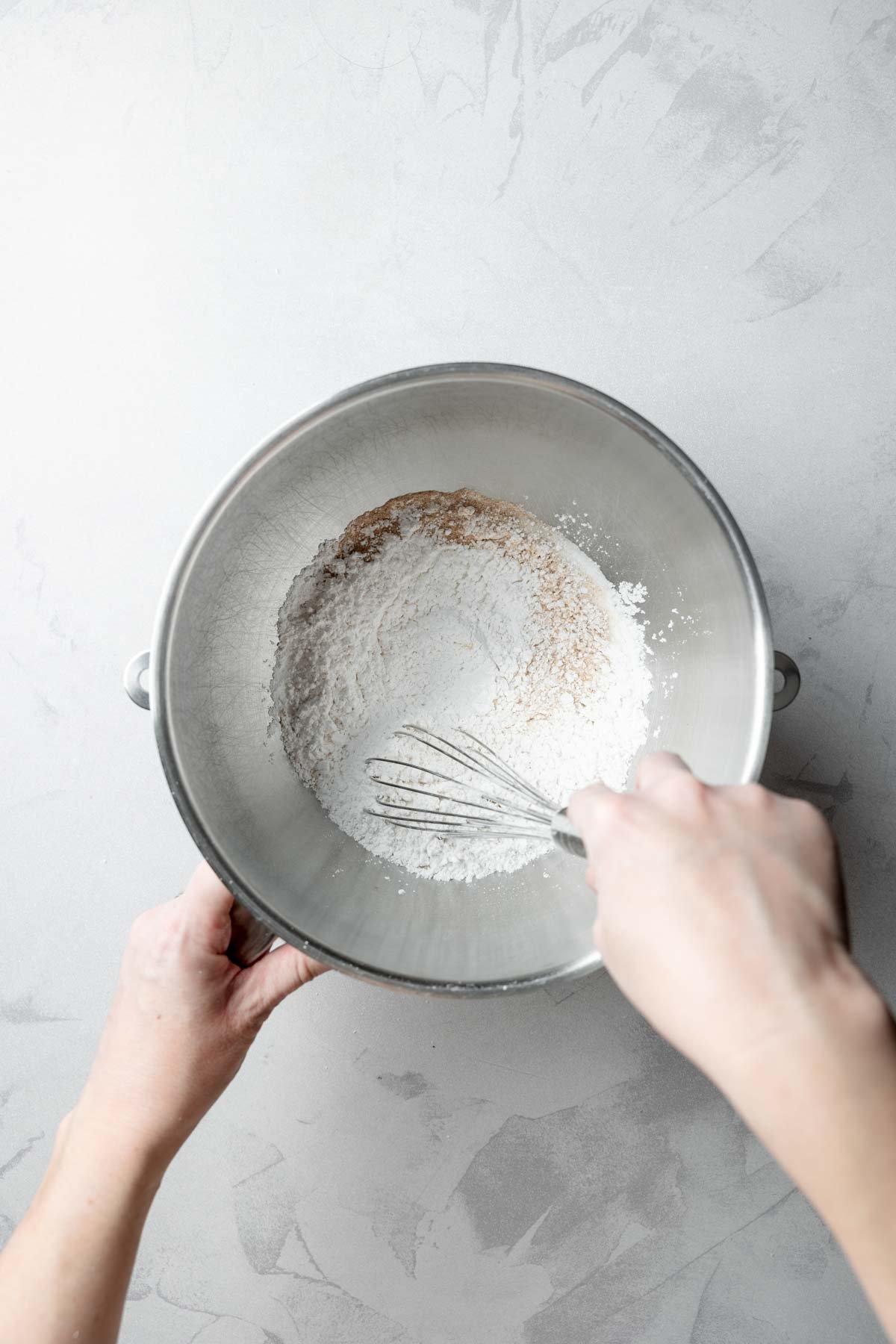
- Step 1: Whisk together the dry ingredients, including the instant yeast.
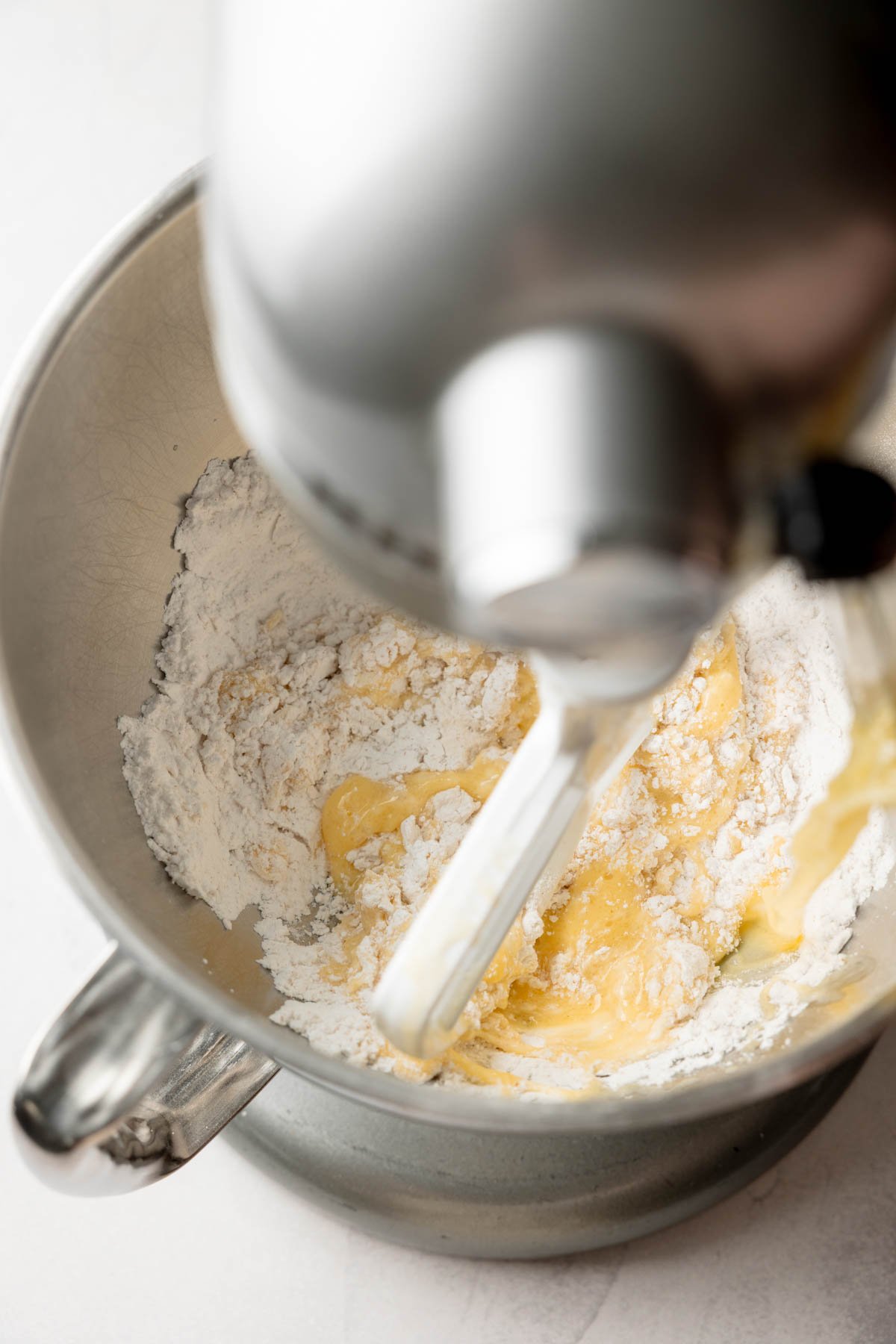
- Step 2: Add the warmed wet ingredients, including the milk, melted butter, and egg.
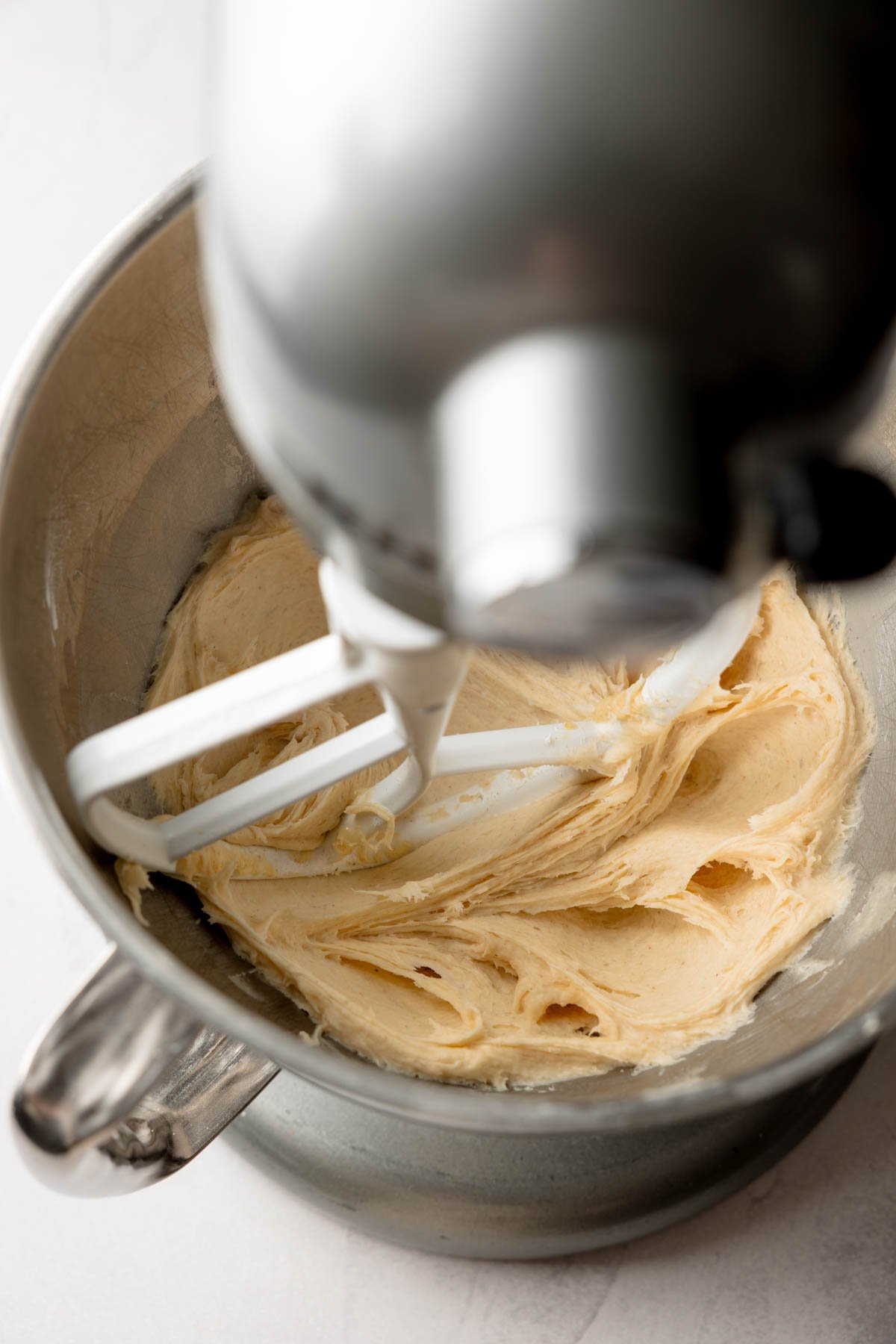
- Step 3: Blend on medium speed with the paddle attachment for 2-3 minutes, scraping the bowl as needed.
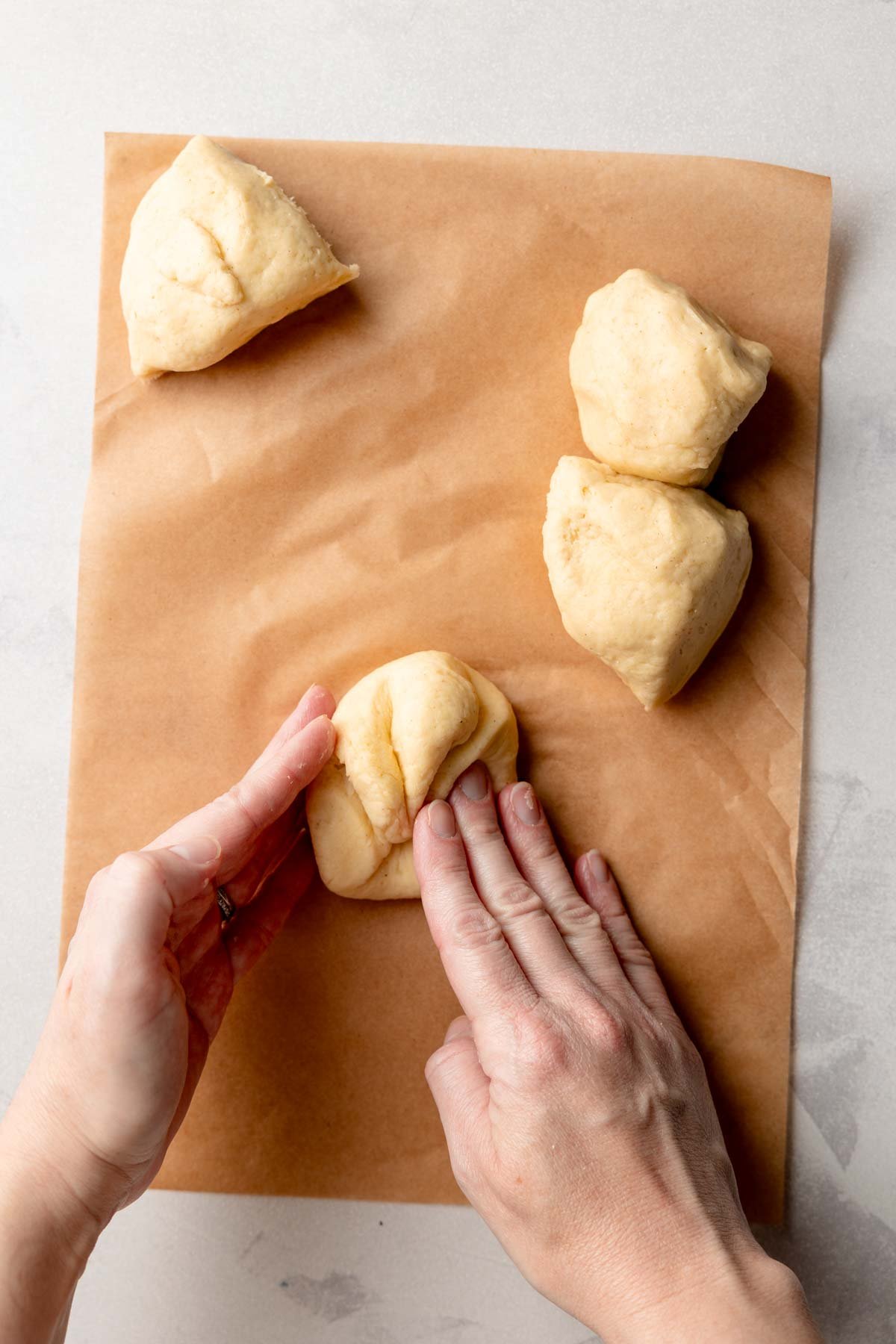
- Step 4: Divide the dough into four equal portions. Roll each piece into a ball and flatten slightly into a thick disc shape.
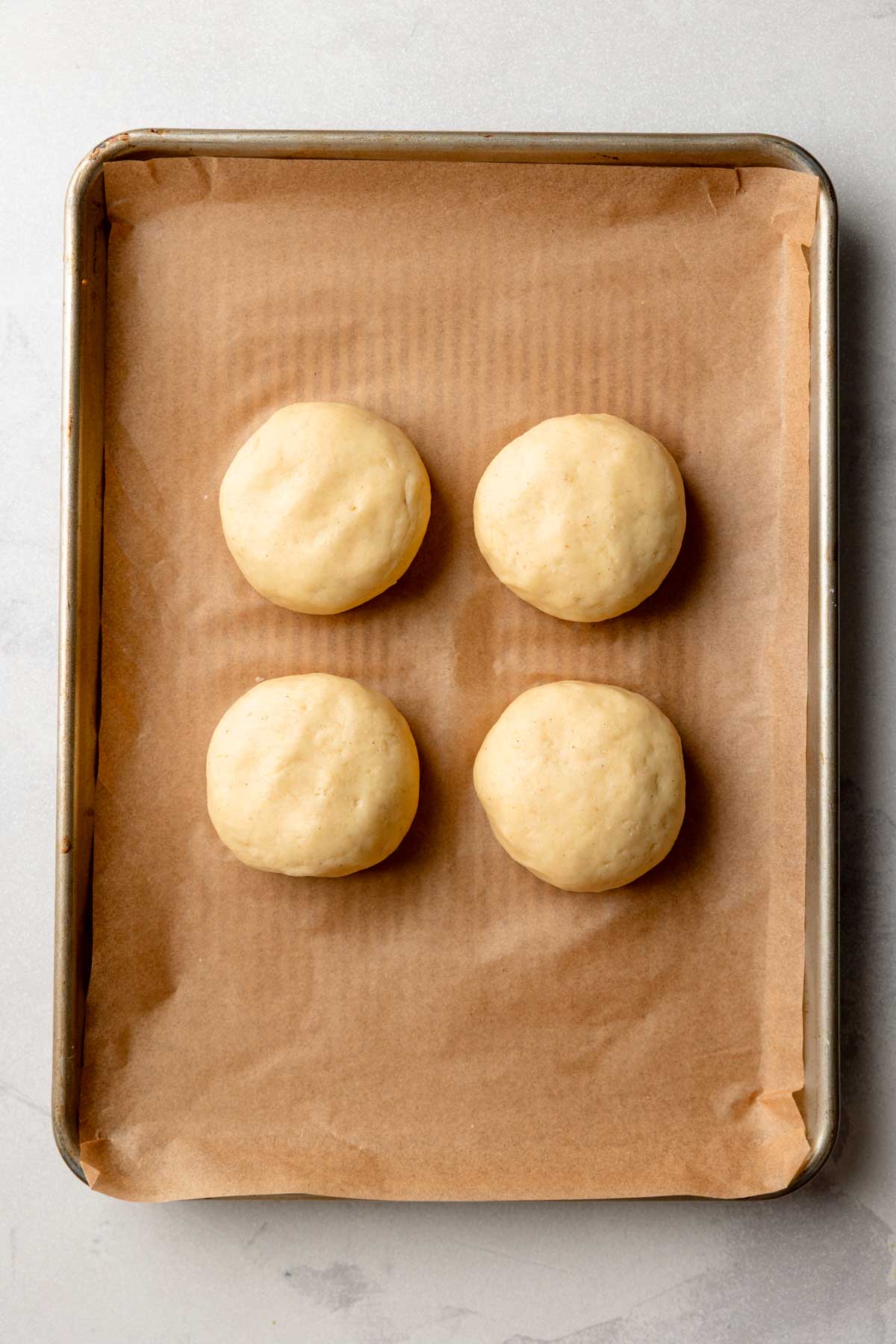
- Step 5: Place them about ½-inch apart on a parchment-lined baking sheet.
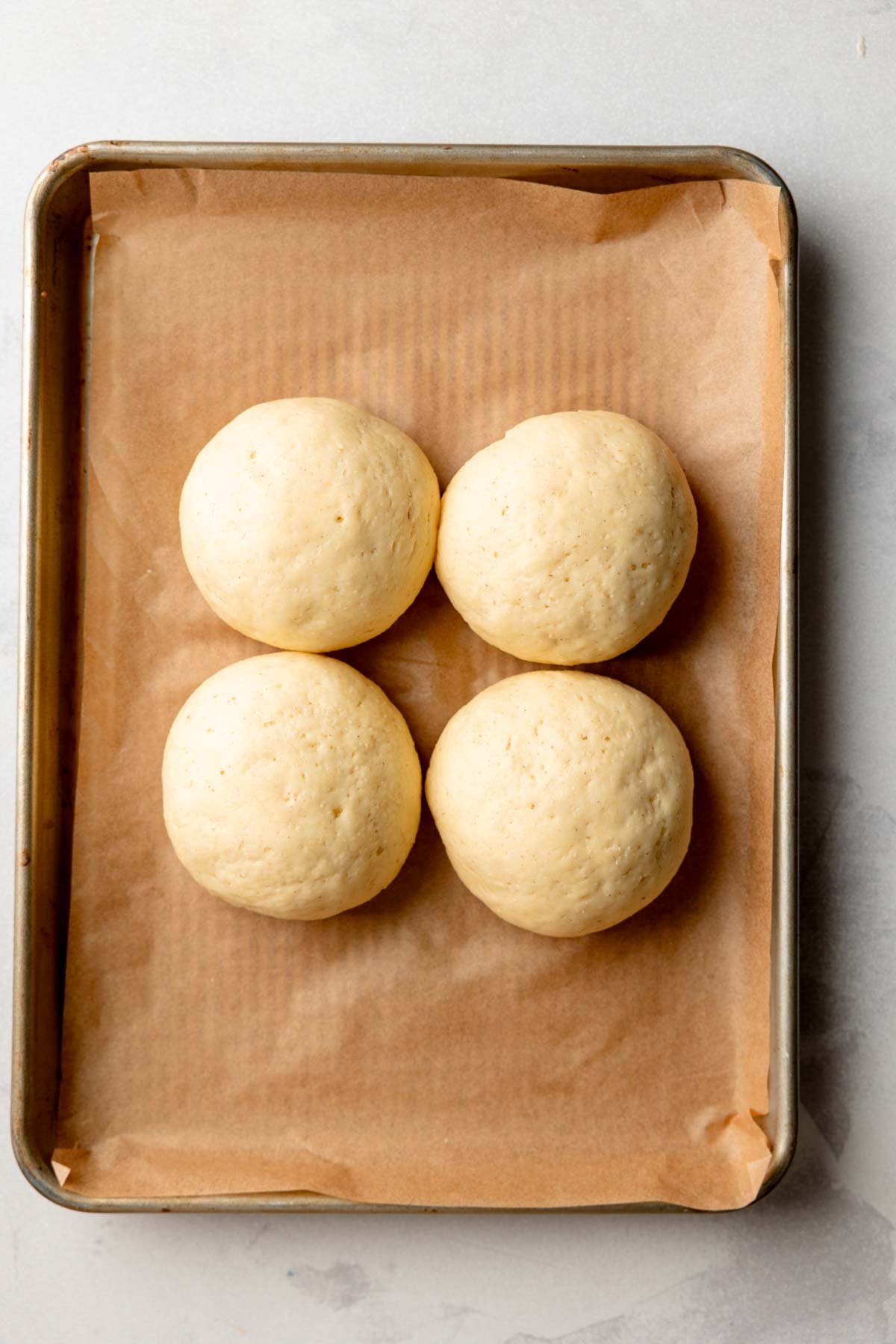
- Step 6: Cover and let the buns rise in a warm place for 45 minutes, up to 1 hour. They should be slightly puffed and touching.
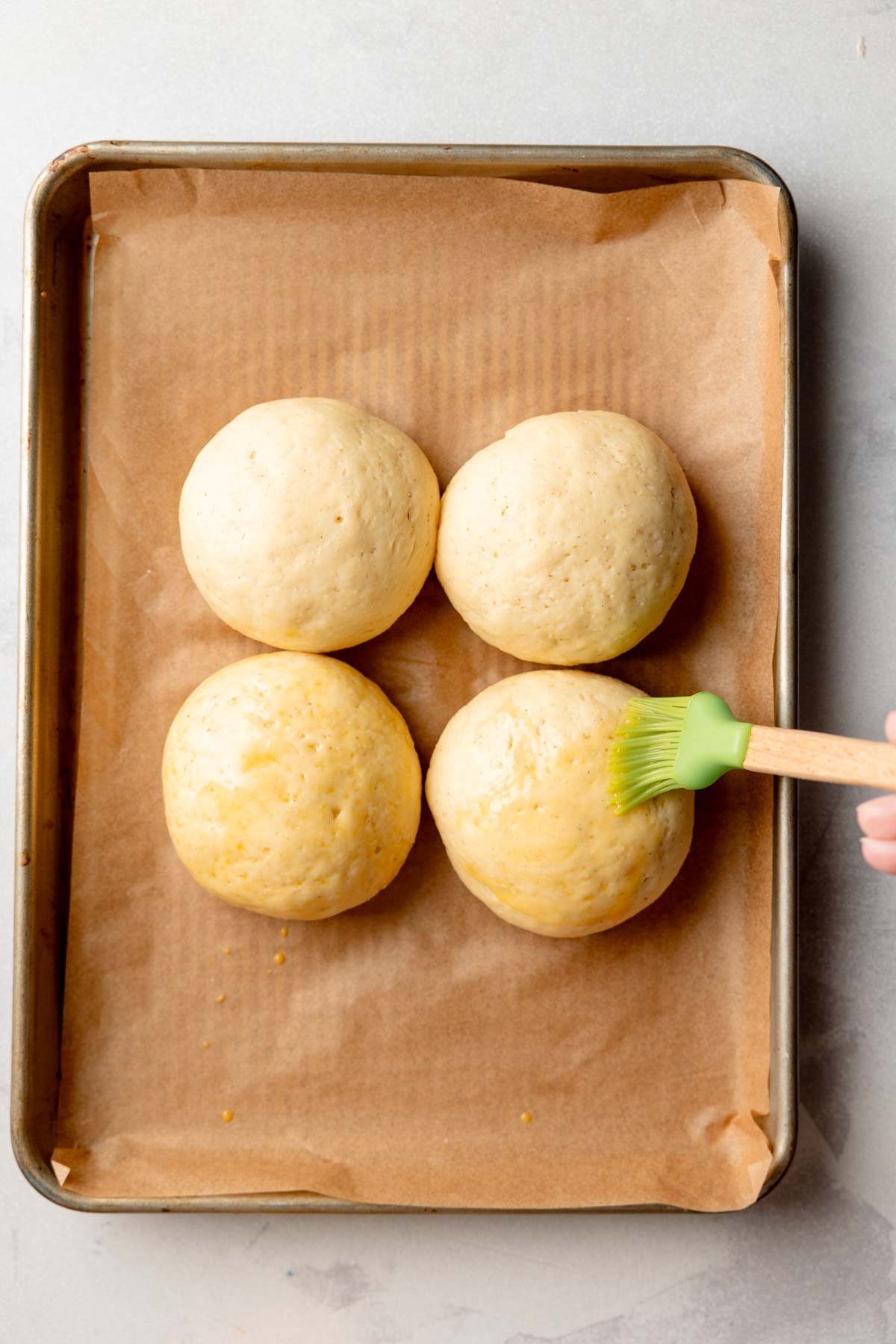
- Step 7: Brush the tops of the buns with an egg wash.
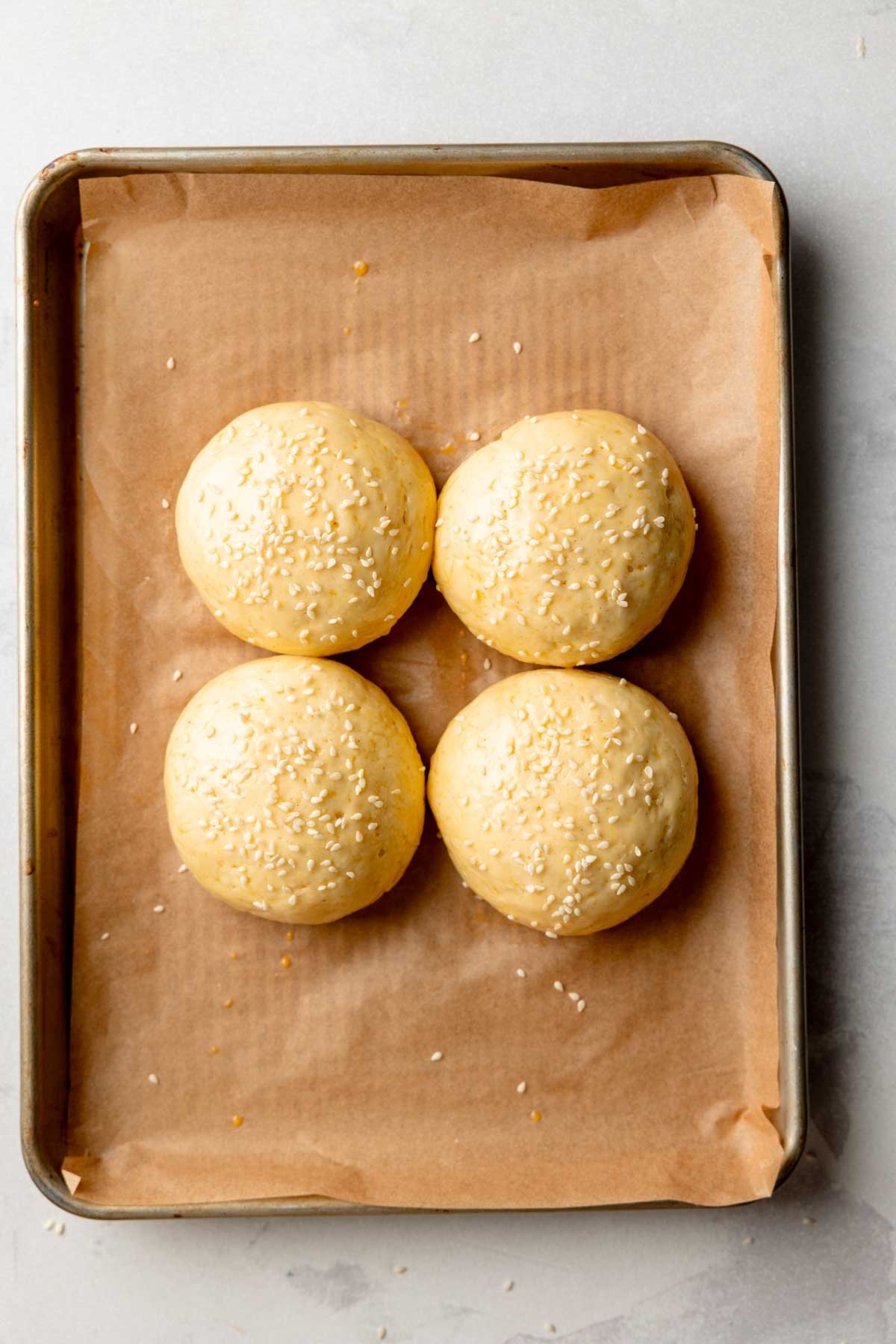
- Step 8: Sprinkle with sesame seeds. Then bake according to the directions in the recipe card below.
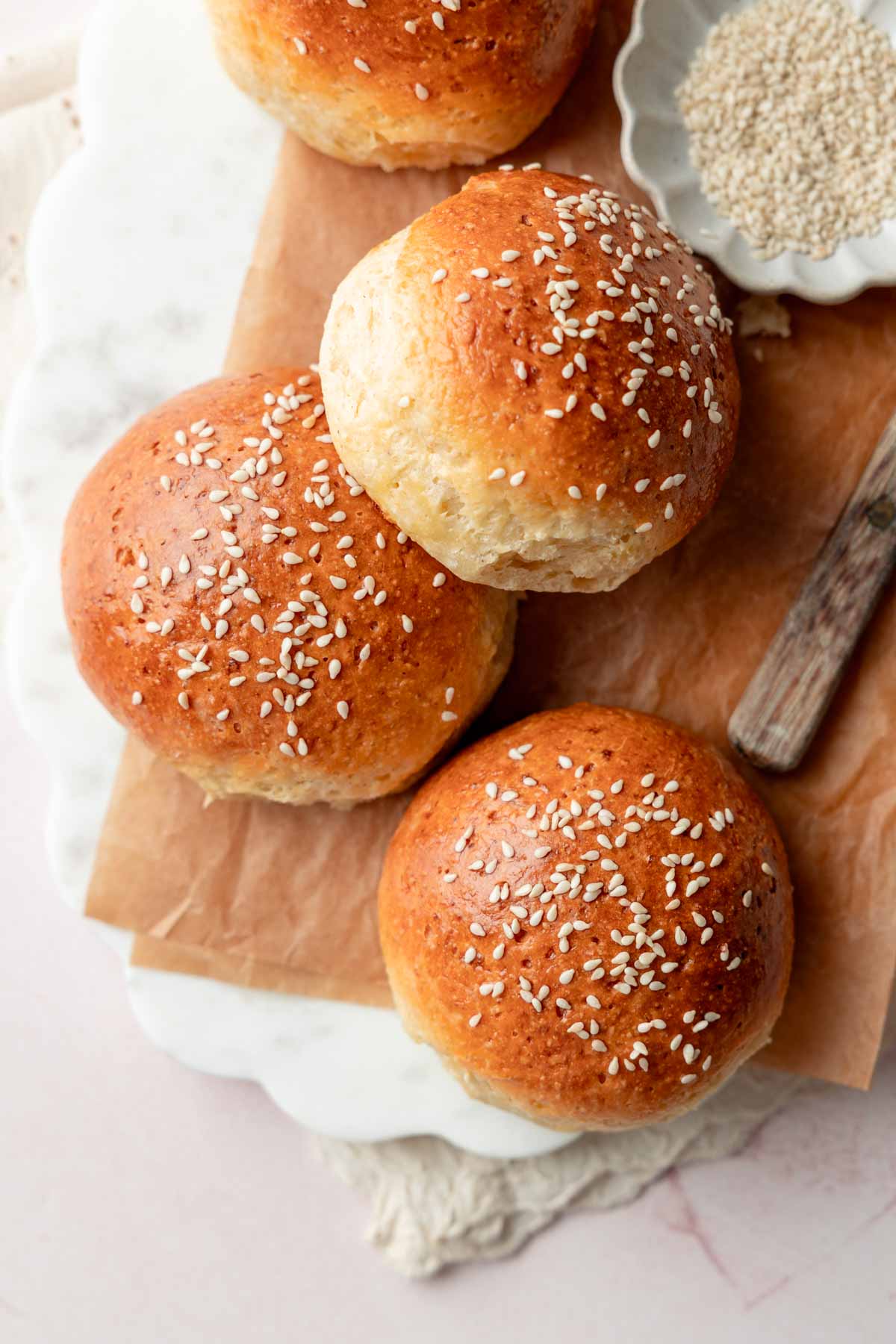
How to Store the Buns
These gluten-free buns are best enjoyed fresh and warm, but they’ll keep for 2–3 days in an airtight container at room temperature or in the refrigerator. Before serving, warm them briefly in the microwave to soften.
To freeze, let the buns cool completely, then store in an airtight bag. Defrost at room temperature or microwave for about a minute before serving.
Top Recipe Tips
- Be sure your ingredients are at the proper temperature. This helps the yeast activate properly and ensures the dough rises as it should. I usually warm the milk and butter together first, then slowly whisk in the egg. After that, I recheck the temperature and, if needed, warm the mixture again slightly to reach 120–130°F.
- Make sure your yeast is fresh. Use yeast that hasn’t expired, has been refrigerated once opened, and is ideally less than 6 months old.
- The buns may not fully double in size. They should look visibly puffy and lighter, but they may not completely double in size. Refer to the step-by-step photos above for a visual guide.
Recipe FAQs
Yes. Go to the gluten-free hot dog bun recipe!
If you only have regular, active dry yeast, dissolve it for 5 minutes in the warm milk. Then mix it in with the rest of the ingredients.
If you only have whole psyllium husks, use 2 ½ teaspoons compared to 1 ½ teaspoons of psyllium husk powder.
Yes, the added psyllium husk helps with the structure of the hamburger buns.
For those that loved it, you can still make the original version of this recipe.
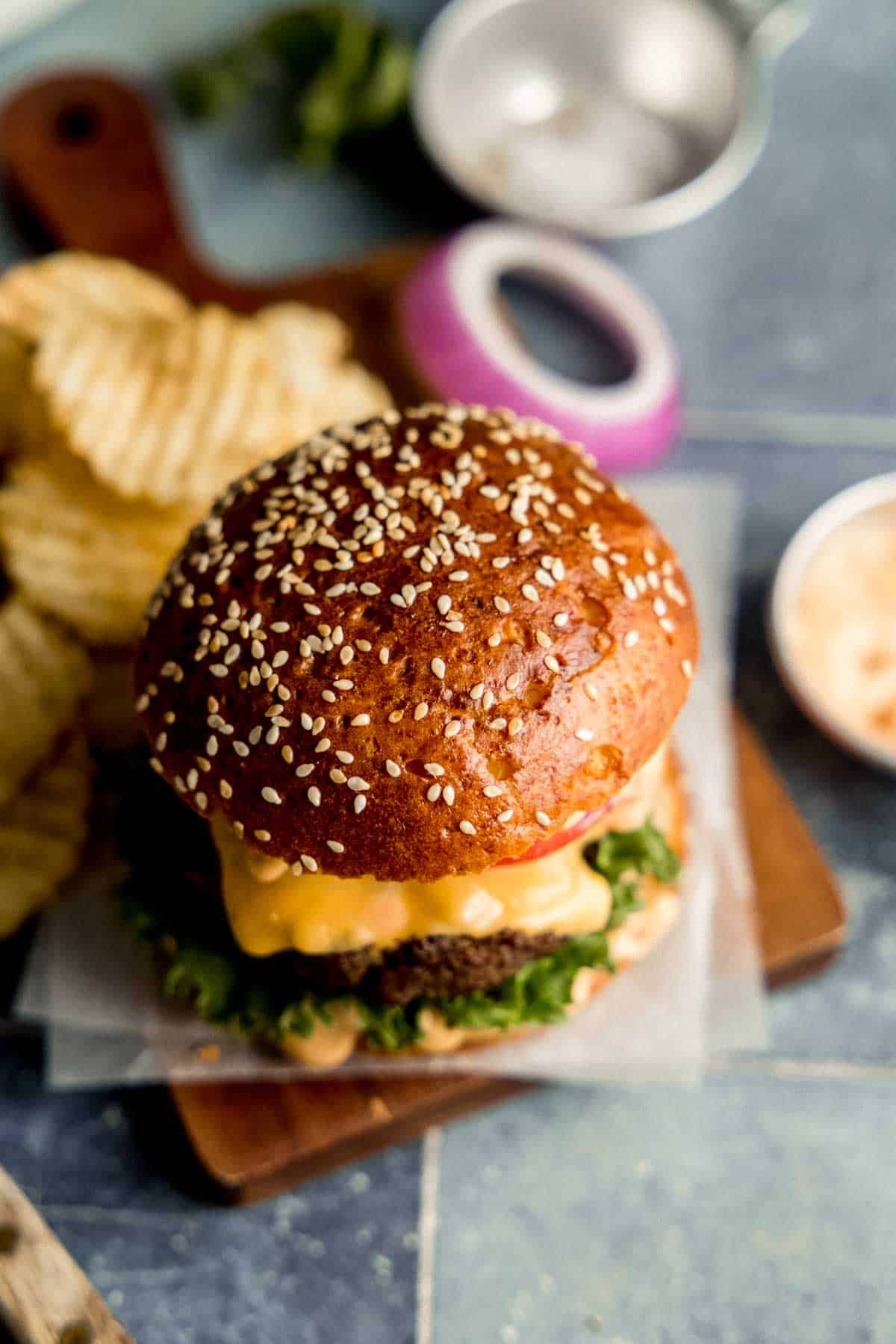
More Gluten Free Bread Recipes
Need more than just a gluten-free bun? Check out my other gluten-free yeast bread recipes, like these gluten-free dinner rolls and gluten-free cinnamon rolls.
Still Hungry? Subscribe Here!
Recipe
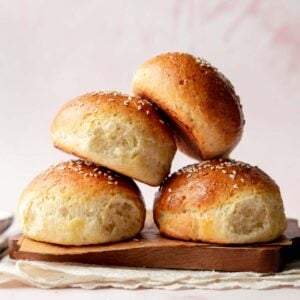
Small Batch Gluten-Free Hamburger Buns
Ingredients
- 195 g Caputo Fioreglut Gluten-Free Flour Blend
- 9 g sugar, 2 teaspoons
- 5 g psyllium husk powder, 1½ teaspoons
- 4 g instant yeast, 1 teaspoons *See notes for active dry yeast.
- 3 g table salt, ½ teaspoon
- 100 g 2% milk
- 44 g butter, melted, 3 Tablespoons
- 14 g oil, 1 Tablespoon
- 1 large egg, room temperature
- sesame seeds, optional for topping
Instructions
- In the bowl of a stand mixer, whisk together the gluten-free flour, sugar, psyllium husk powder, instant yeast, and salt.
- Warm the milk, butter, and oil to 120–130°F. Slowly whisk in the egg until well combined. Recheck the temperature and warm again if needed to reach 120–130°F.
- Add the warmed wet ingredients to the dry ingredients. Mix on medium speed for 2–3 minutes, scraping down the bowl as needed, until the dough is smooth and well combined.
- Divide the dough into 4 equal portions (about 105 grams each). Gently shape each into a smooth ball.
- Place the shaped buns about ½ inch apart on a parchment-lined baking sheet and press to flatten slightly into a disc shape.
- Cover loosely with plastic wrap and let rise in a warm place for 45 minutes to 1 hour, or until visibly puffed.
- Gently brush the tops with egg wash. Sprinkle with sesame seeds, if desired.
- Bake in a preheated 350°F oven for about 30 minutes, or until golden brown and the internal temperature reaches around 205°F.
Video
Notes
- Make sure you're using instant yeast and that the yeast is not expired or older than 6 months.
- If you need to use active dry yeast, dissolve it in warm milk (110°F) for 5-10 minutes before adding to the dry ingredients.
- Proof the buns until visibly puffy; they may not fully double.
- I highly recommend using weighted measurements for accuracy. If you want to use cups, toggle between 'us/cups' and 'metric/grams' buttons at the top of the list of ingredients.
Nutrition
* Nutritional information is provided as a courtesy and should be used as an estimate only. See the nutrition policy for more information.

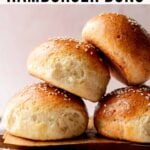
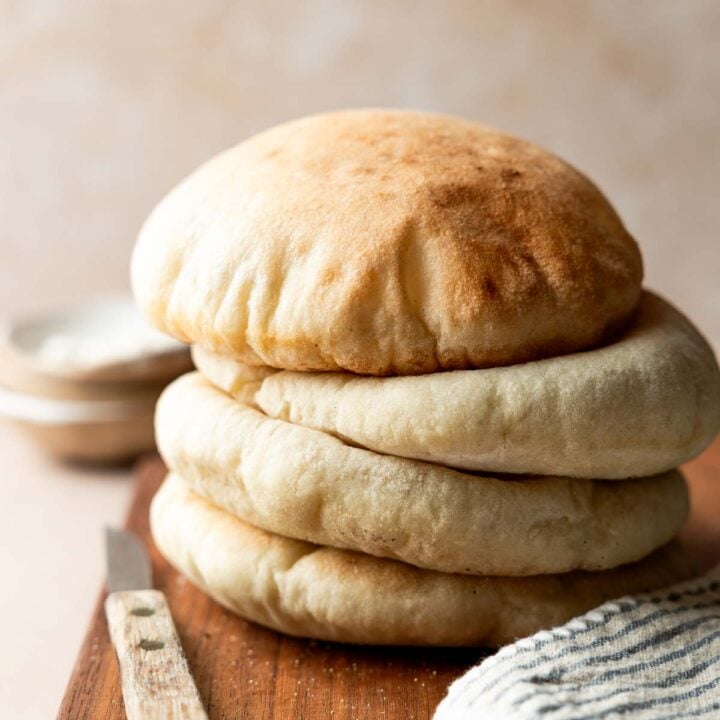


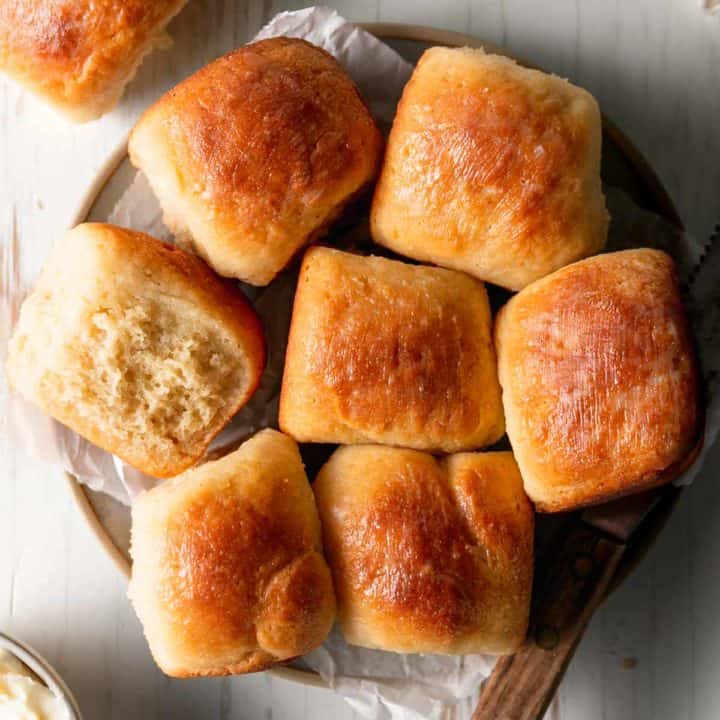
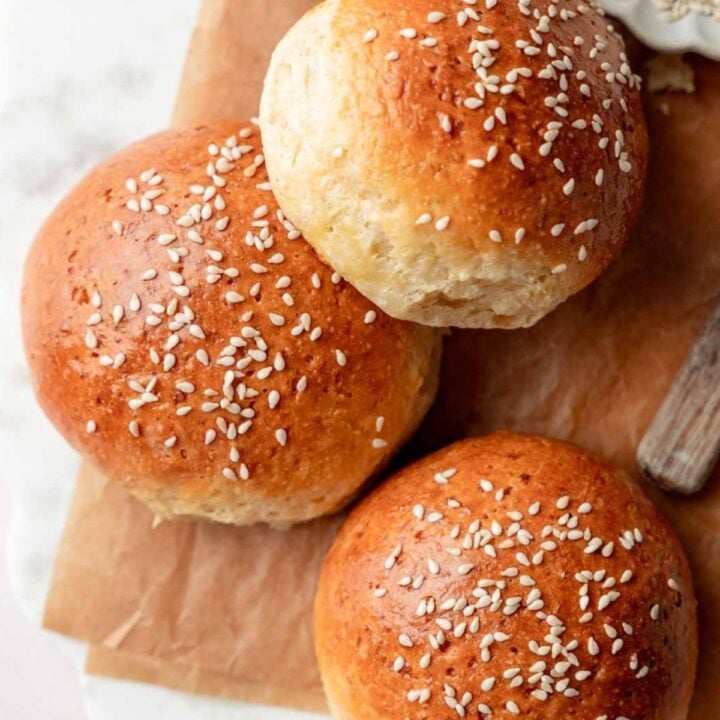
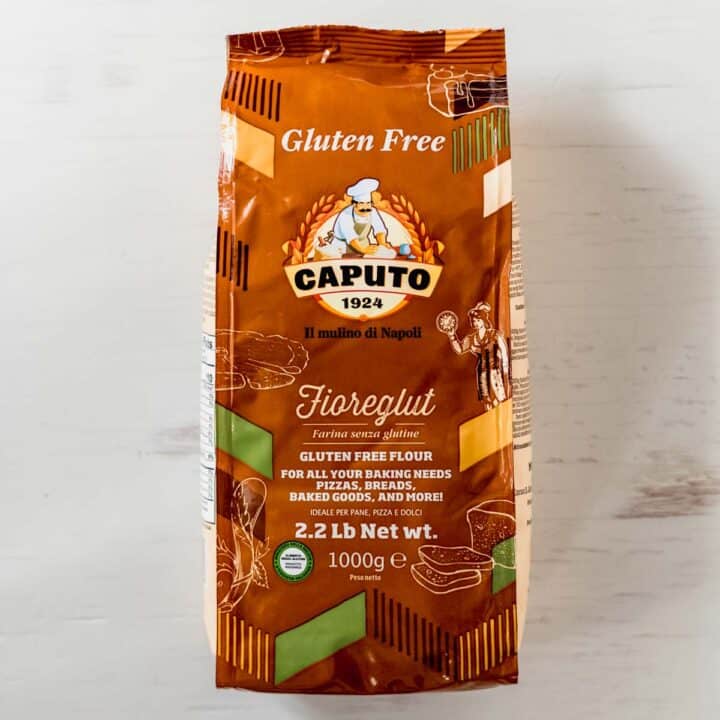
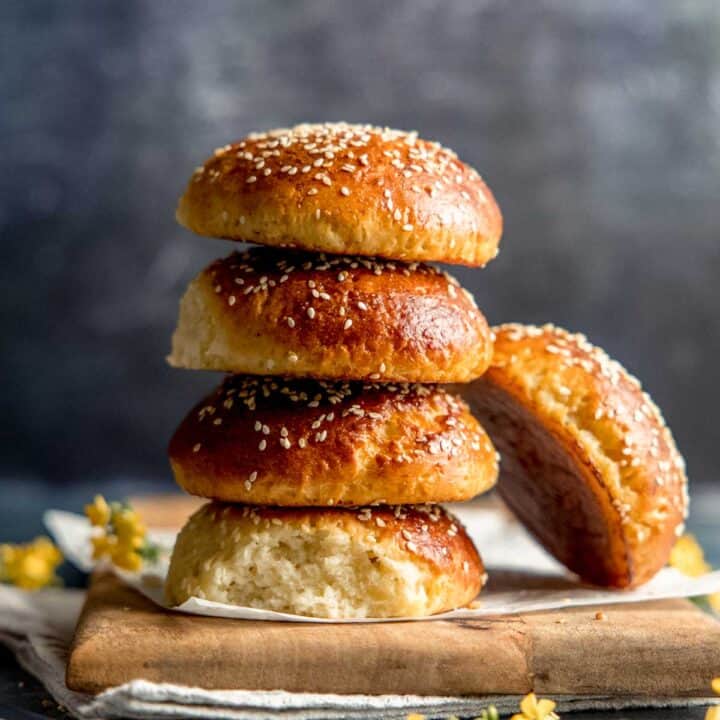
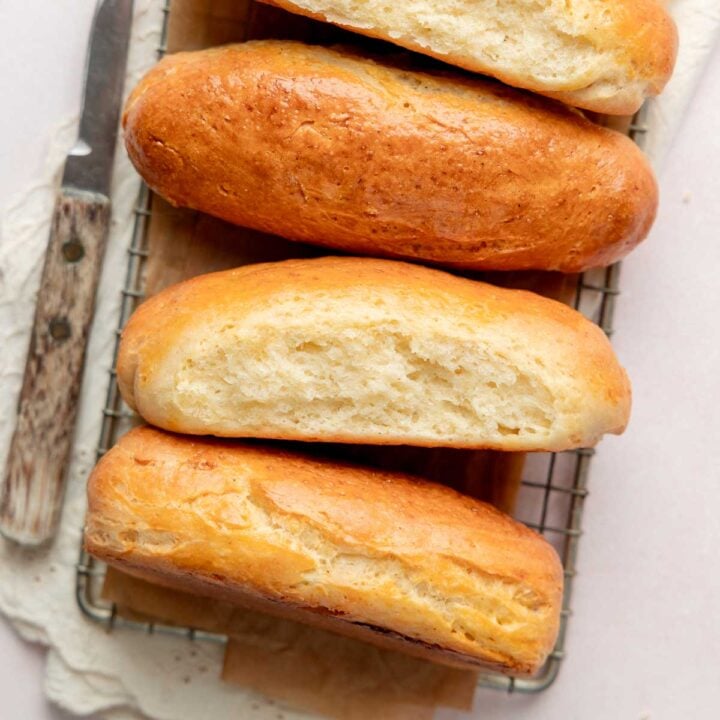
Nicole says
The taste was fine. The texture was wrong. They were dense and crumbly. Do not recommend at all.
Katie Olesen says
Very bummed you felt that way, Nicole. You may enjoy this version better: https://wheatbythewayside.com/original-gluten-free-brioche-burger-buns/ The dough is harder to work with but they higher hydration makes them less dense.
Dale Ashton Guest says
Loved the proportions on this recipe, the texture came out great and the psyllium husk was JUST enough it was perfect. My one note for anyone using this recipe and wanting fast food-eque buns would be to double the batch and make four buns at twice the weight- I made it the original way which resulted in sliders (still delightful!) but if you want more of that traditional American hamburger feel, doubling the recipe and making 4 large 200g buns was perfect.
Katie Olesen says
Appreciate the thoughtful tip, Dale! Glad you enjoyed the recipe. I love that you agree the psyllium husk was just enough. I have tried a few recipes that are heavy on the psyllium and I was not a huge fan. I've personally found that striking that perfect balance with the psyllium results in a much better texture.
Katie Olesen says
I just made another batch of these and wanted to note for anyone curious, following the recipe for 4 buns (approximately 105g each) resulted in buns that were about 3.25-3.5 inches wide and about 1.75 inches tall. This was a comparable size to our local grocery store's bakery hamburger buns. When you form the ball, flatten it slightly before you allow them to rise. This will help in achieving this overall size.
Liz says
I'm loving the flavor! However I can't seem to get the dough to rise. I'm ending up with heavy, dense rolls. I've used liquid mixture at 120 and 115 separately and it's still not working
Using a scale and all. Any suggestions??
Katie Olesen says
Hi Liz, how old is your yeast? If it's been left open and unrefrigerated or is older than 6 months, I'd get some fresh yeast. Check that you are you using "instant yeast" not "active dry yeast". Instant yeast or bread machine yeast can be mixed in with the dry ingredients. If you have active dry yeast, you need to dissolve it in the warm water first for five minutes and then mix it in with the dry ingredients. Also, these rolls may not fully double in size, but they should look visibly puffed. Try to reference the pictures above as a guide on that. Hope this helps, but please feel free to ask any more questions you might have.
Rose says
Hey what instant yeast is gluten free please. Thankyou.
Katie Olesen says
Most are! I use Fleischmann's. I think the only ones I've seen that are NOT gluten-free were from Red Star Yeast.
Judi says
I just mixed them up & subbed sourdough starter for the yeast. Dough was very nice to work with.
Katie Olesen says
Please let me know how the sourdough works for you. I haven't tried these with sourdough instead of yeast.
Mary says
Is there still a link to the original recipe? While I agree that recipe was very wet, this one didn't turn out as well for me.
Katie Olesen says
Yes, you can find it here: https://wheatbythewayside.com/original-gluten-free-brioche-burger-buns/
Margaret Hunt says
We had these for dinner tonite. So good my husband said he let like he was eating at a restaurant. Got the 4” silicon mold so next time hope they will be a little neater. Practice makes perfect. Thanks!
Katie Olesen says
So glad you enjoyed them! I made a few small tweaks to the recipe, so they should be easier to shape next time! Let me know what you think!
Chloe says
I didn’t have potato flour so just subbed Tapioca for that part. Came out beautiful and nicely browned. Didn’t want to waste another egg for the egg wash so I lightly beat the leftover white with a few drops of half n half and used that to brush the tops.
Used 4 “ silicone molds to bake them.
Chilling the dough for 20 minutes made them much easier to roll into balls.
Pam says
My son gave this 5 stars for taste. I found it easy to do (but only after leaving for 10 minutes before shaping). I will make five instead of 5 next time as they are very big compared to the vege burgers we use. I will look into the rings others have suggested. Would be interested in knowing sizes.
Beatrice Shumey says
These are the best gf buns I have ever made! Thank you for the recipe. I used rings that I sprayed with oil and put the batter inside. I made four but ended up with five because they overflowed the rings. In the end the rings provided a good support for them and the result was a nice airy tall bun with great texture and it holds together! Perfect. Thank you.
I subbed 1/2 cup of buckwheat flour, 1/2 cup of sorghum and 1/8 cup of millet flour. Plus the 2 tbsp.of potato starch and the psyllium husk.
Katie Olesen says
Beatrice, you are so smart with the rings! I need to get a set and try that out. Glad you enjoyed the recipe. Thanks so much for sharing!
Martin says
Awesome recipe, I was thinking about rings today for the batter(they seem to rise out and not up) as I used spatula to push the sides of the buns up lol, also made 1 loaf. Sprinkled rosemary salt on top, no sesame seeds.